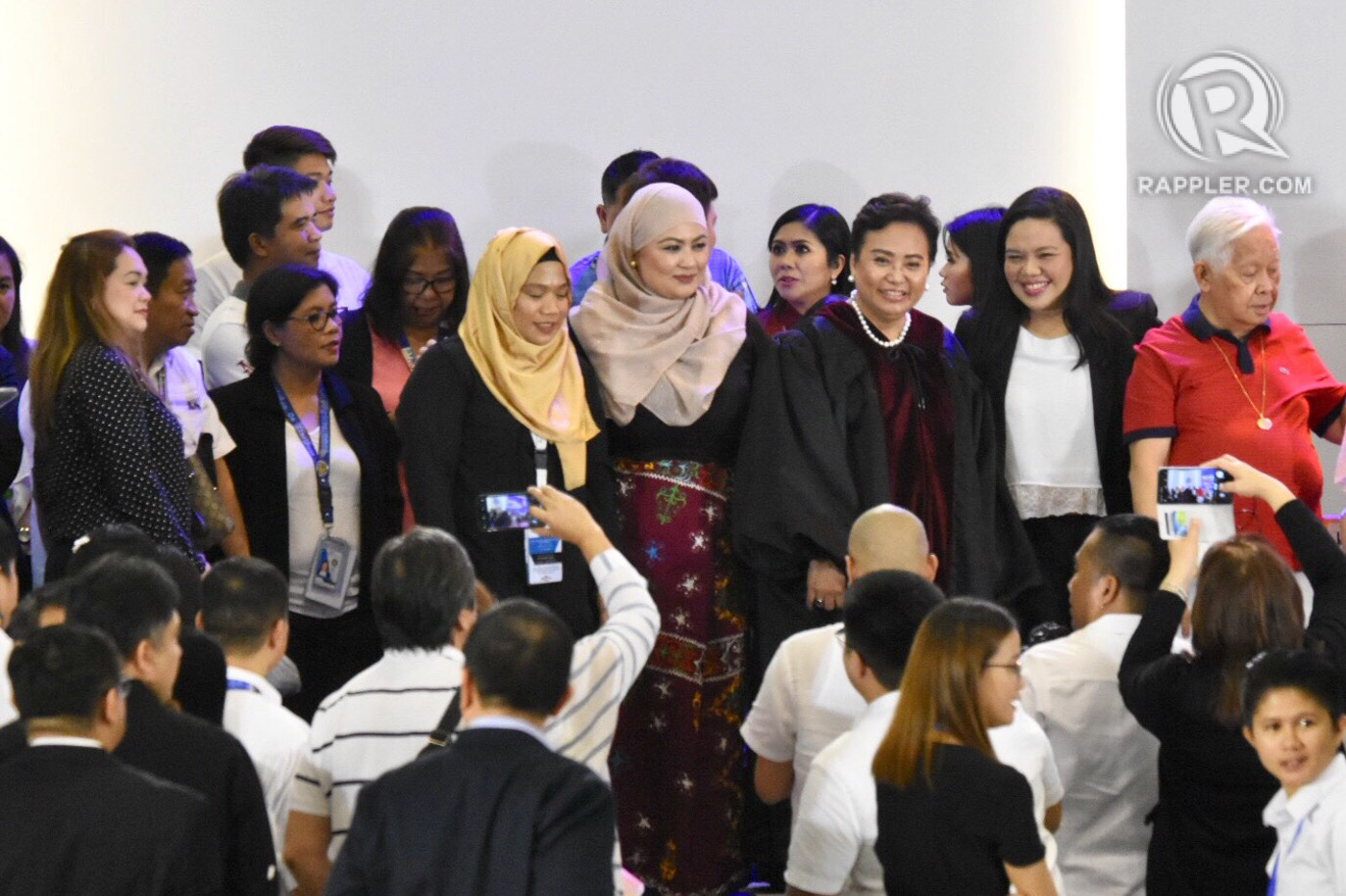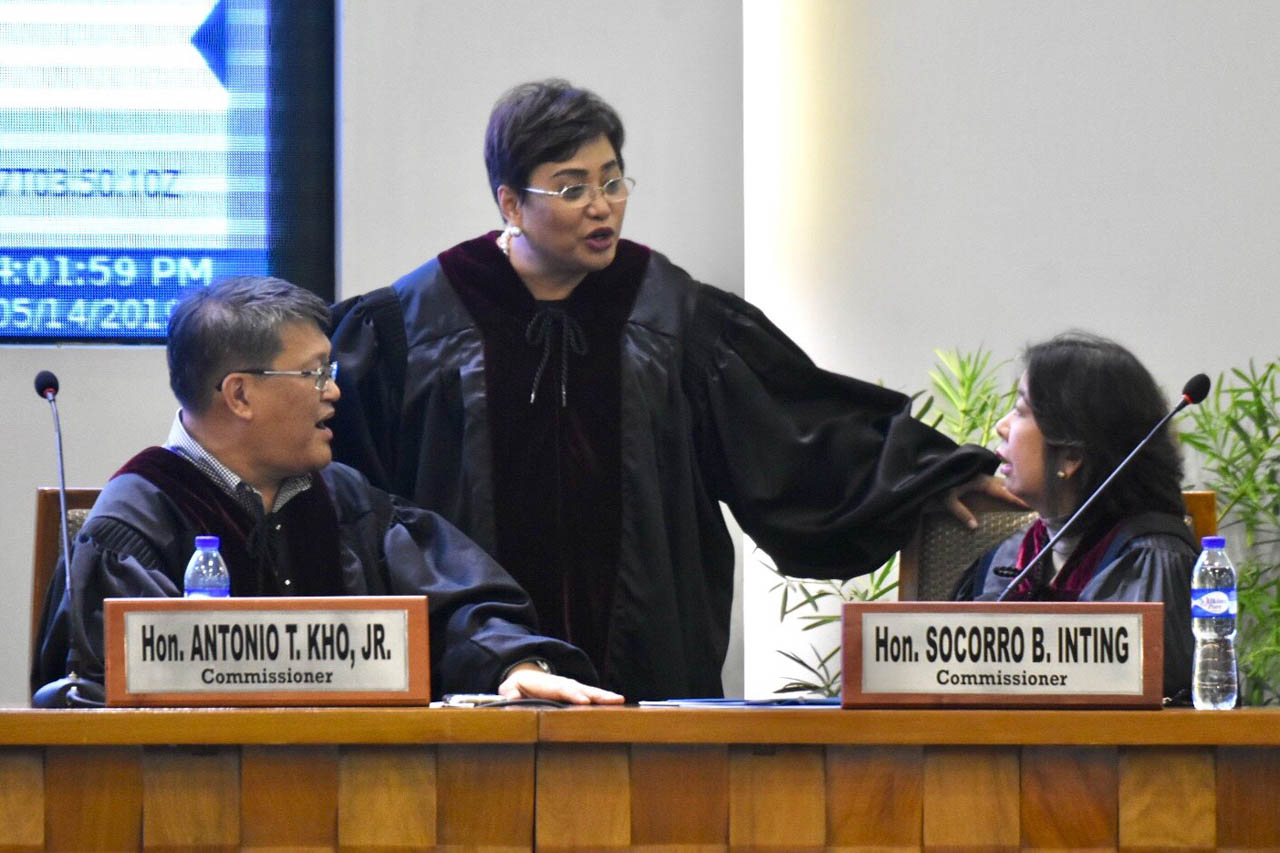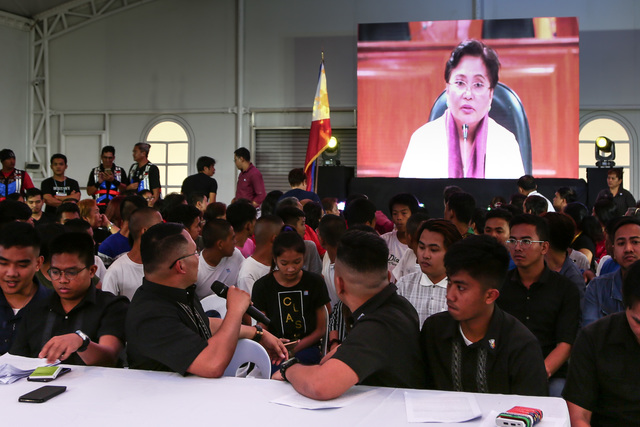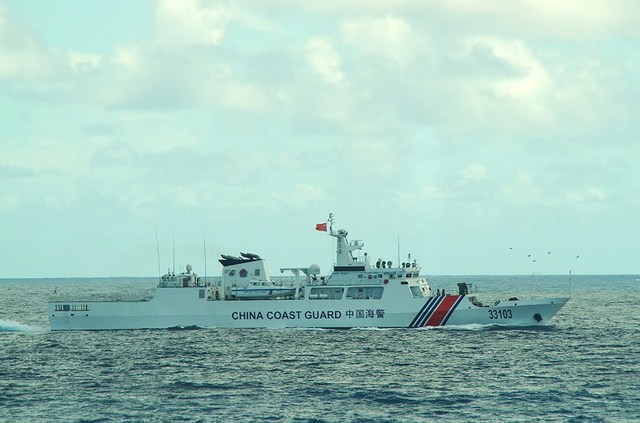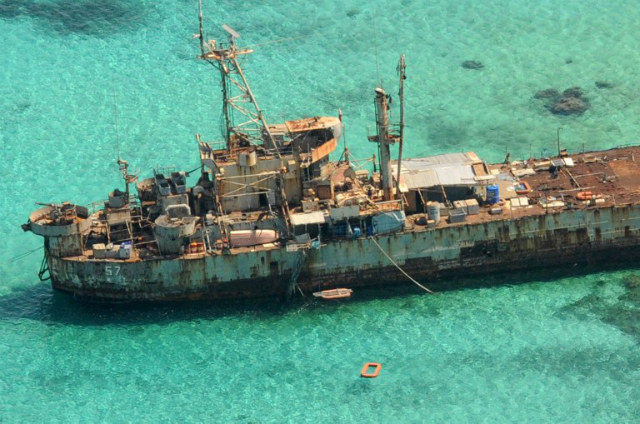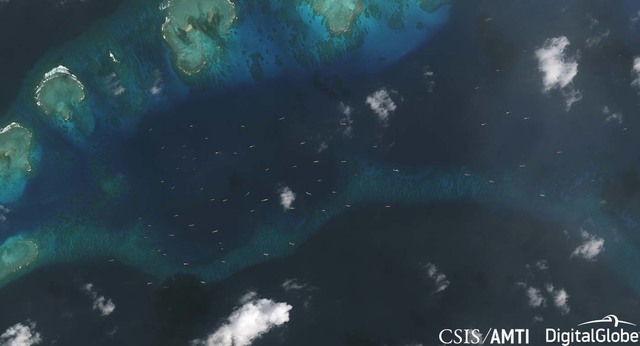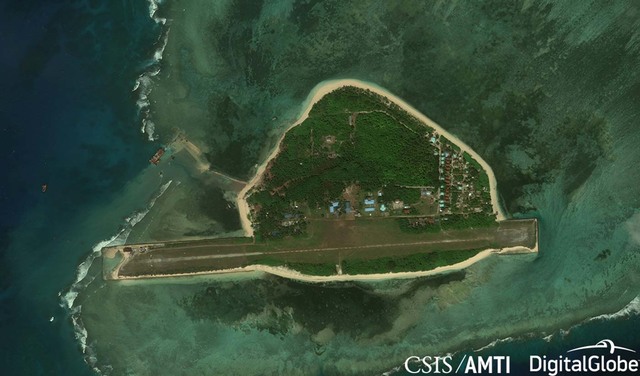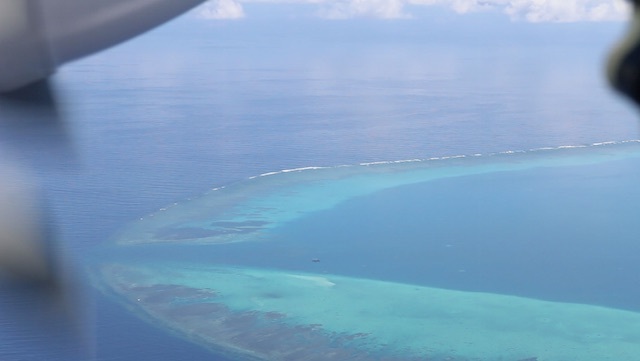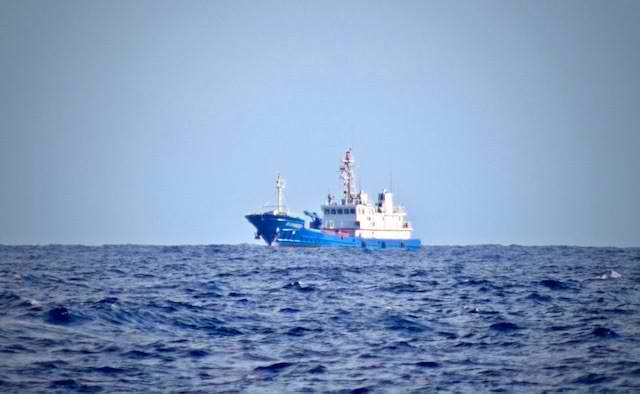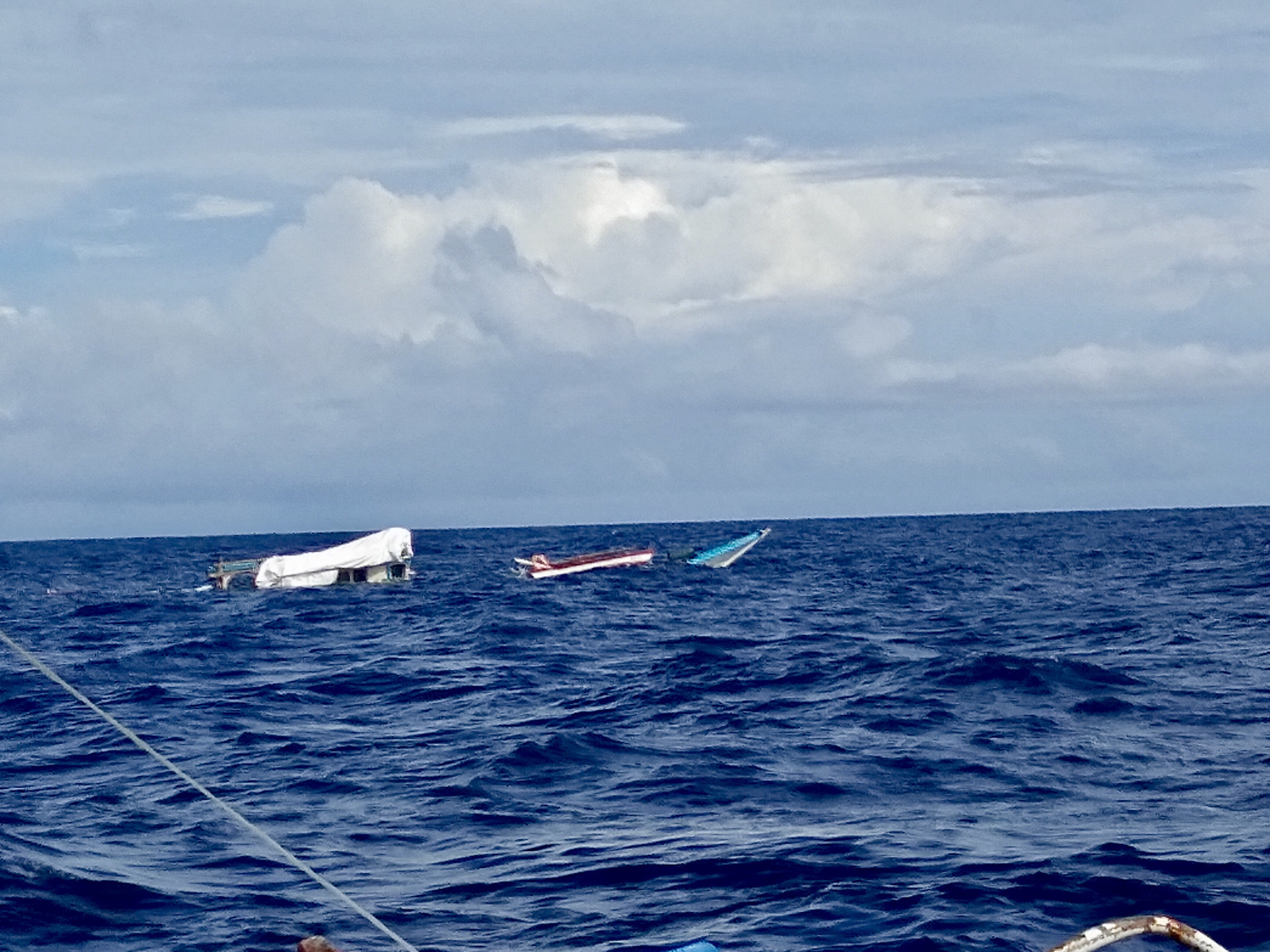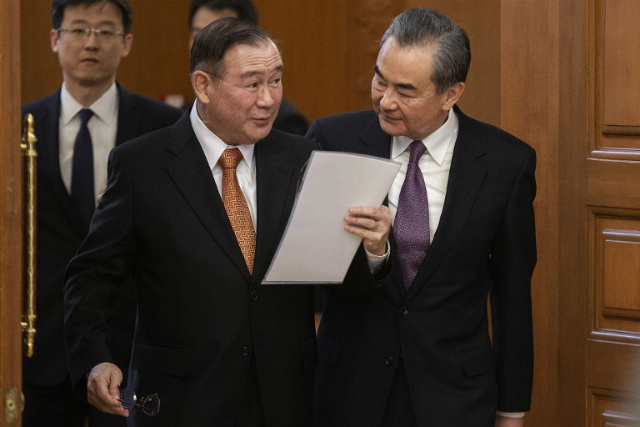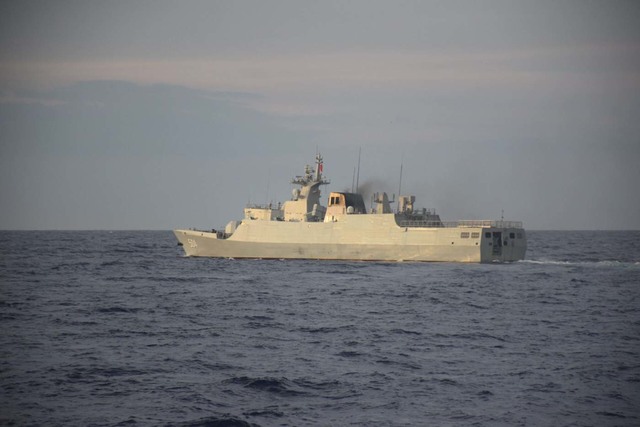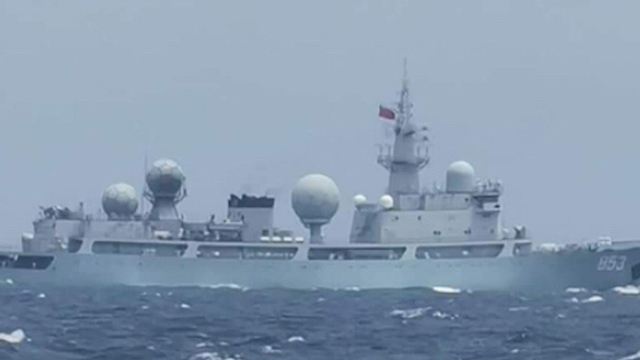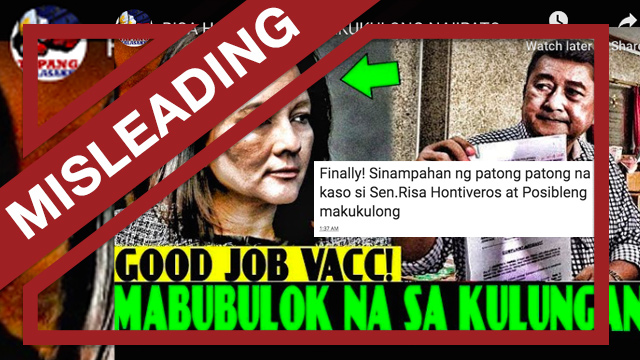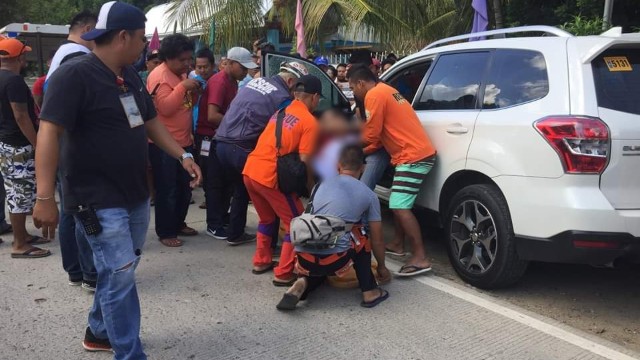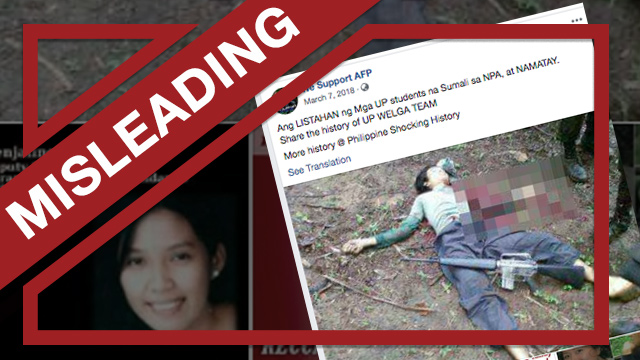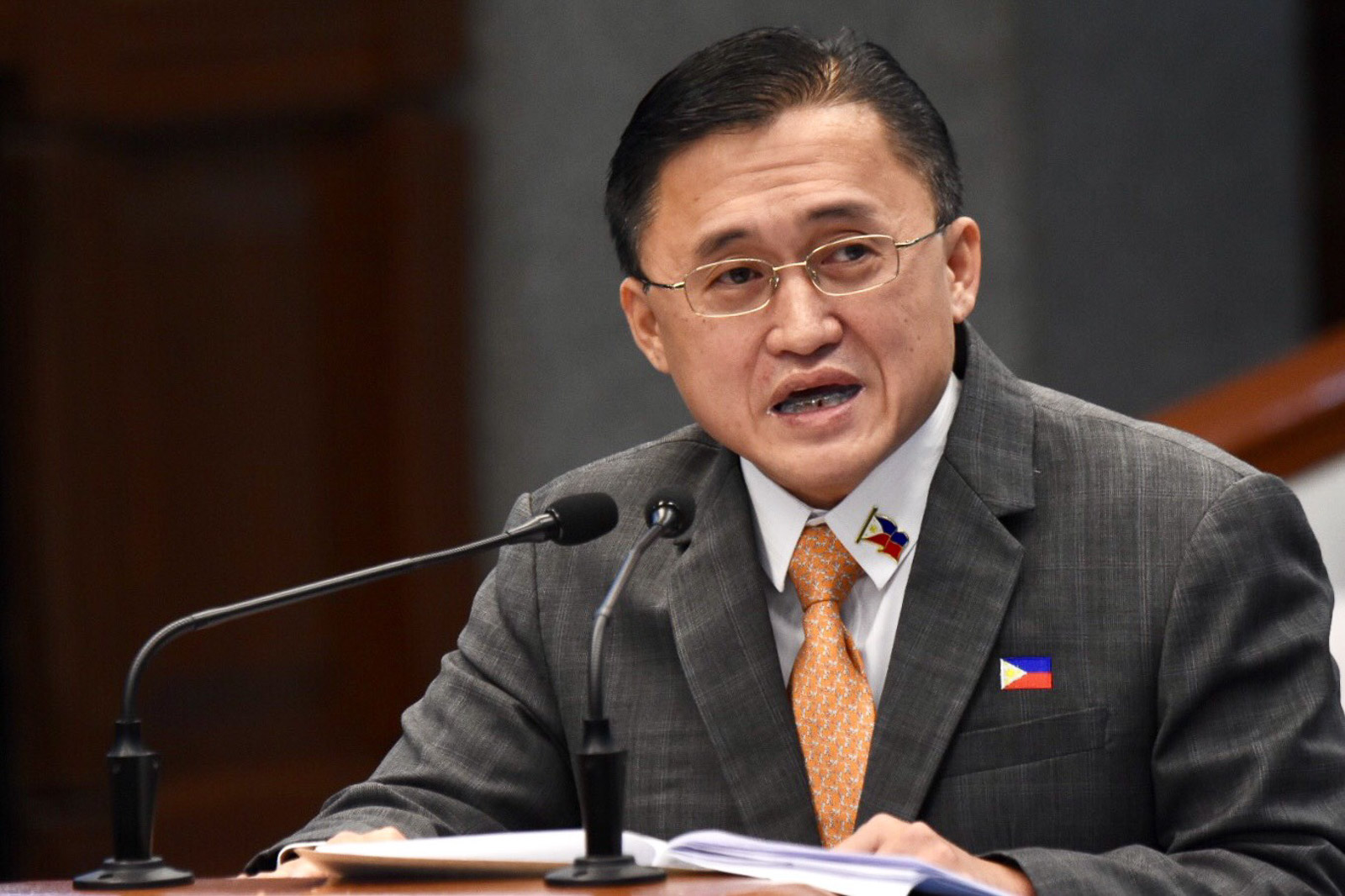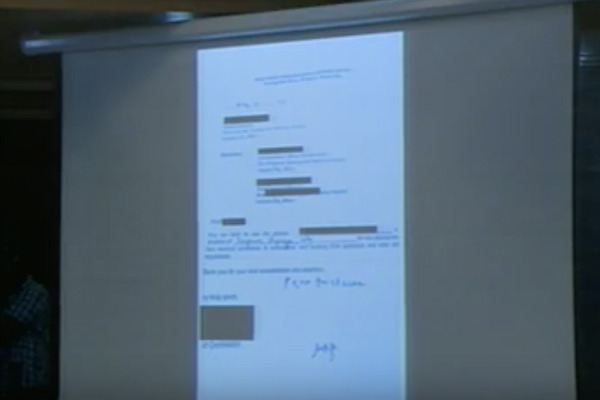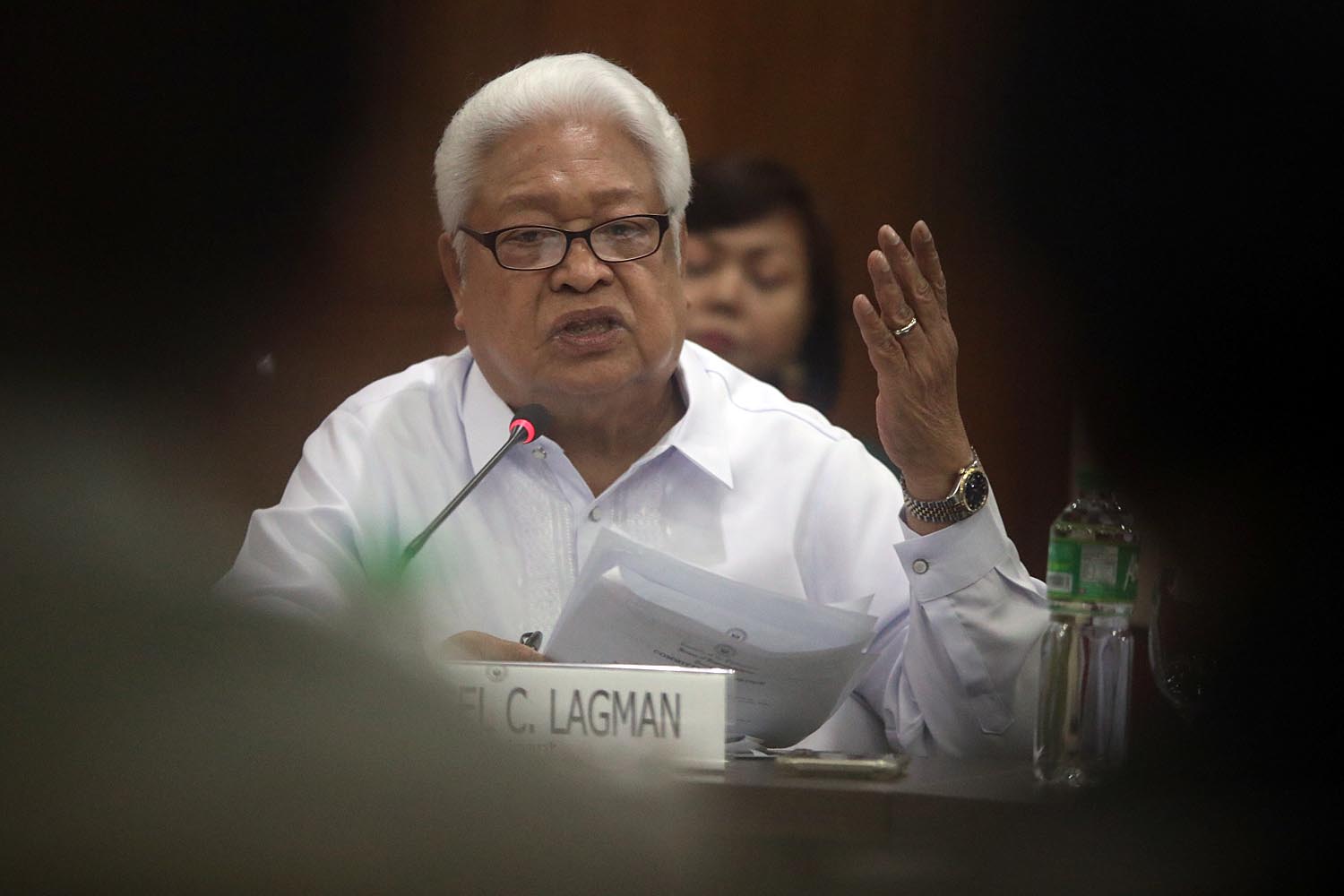MANILA, Philippines – Eight-hour Cabinet meetings. Midnight monologues on repeat. Curve-ball policy pronouncements. These are just some of the presidential habits a Duterte Cabinet member must learn to live with.
At the midway mark of Rodrigo Duterte’s presidency, only a little over half of his original Cabinet members remain standing. The other half were fired, pursued political ambitions, or failed to get confirmed by Congress. A few were transferred to other government posts. (READ: Cabinet members hail Duterte at halfway mark of presidency)
Among the survivors are Duterte’s oldest pals – his longtime lawyer Executive Secretary Salvador Medialdea, childhood friend Finance Secretary Carlos Dominguez III, and retired generals Defense Secretary Delfin Lorenzana and National Security Adviser Hermogenes Esperon Jr.
The most trusted of them all, Special Assistant to the President Bong Go, has moved to the Senate, though in actuality, remains Duterte’s constant companion and whisperer.
Duterte holds Cabinet meetings every first Monday of the month at the Aguinaldo State Dining Room in Malacañang. There have been a total of 40 Cabinet meetings so far, with the last one taking place on August 5. They usually start around 4 pm, with a prayer by the assigned Cabinet member, and last well into the night, sometimes stretching until the next morning.
Through the years, Cabinet members have faced controversies, with only a few getting the sought-after presidential assurance of trust and confidence. Already, two are being investigated for corruption based on complaints filed by private individuals. (READ: Keeping up with Duterte: One year inside the Cabinet)
Secretaries live in constant fear of demolition jobs, given Duterte’s “one whiff, you’re out” policy and his mysterious sources of information on the doings of his appointees.
Keeping up with Duterte is a challenge in itself, with his penchant for announcing shocking policies without consulting Cabinet members most affected.
Another marked change in the Duterte Cabinet is its composition of former military and police generals.
From only 4 at the start of his term, the number nearly tripled, to 11. Duterte said it’s discipline, obedience, and efficiency that he values in retired generals.

The Cabinet is composed of heads of executive departments and officials who serve as advisors of the president. They are “alter egos” of the president and wield his power over their respective departments, according to the Official Gazette.
The president appoints them but for most Cabinet members, their designations must still be confirmed by Congress through the powerful Commission on Appointments. But a president can fire a Cabinet member any time and for any reason.
The Duterte Cabinet’s work was rewarded with its highest-ever net satisfaction rating in a Social Weather Stations survey last May.
In this piece, we look at the many changes the Duterte Cabinet has undergone and explain the roles and spheres of influence certain critical Cabinet members have.
THE WINNOWING

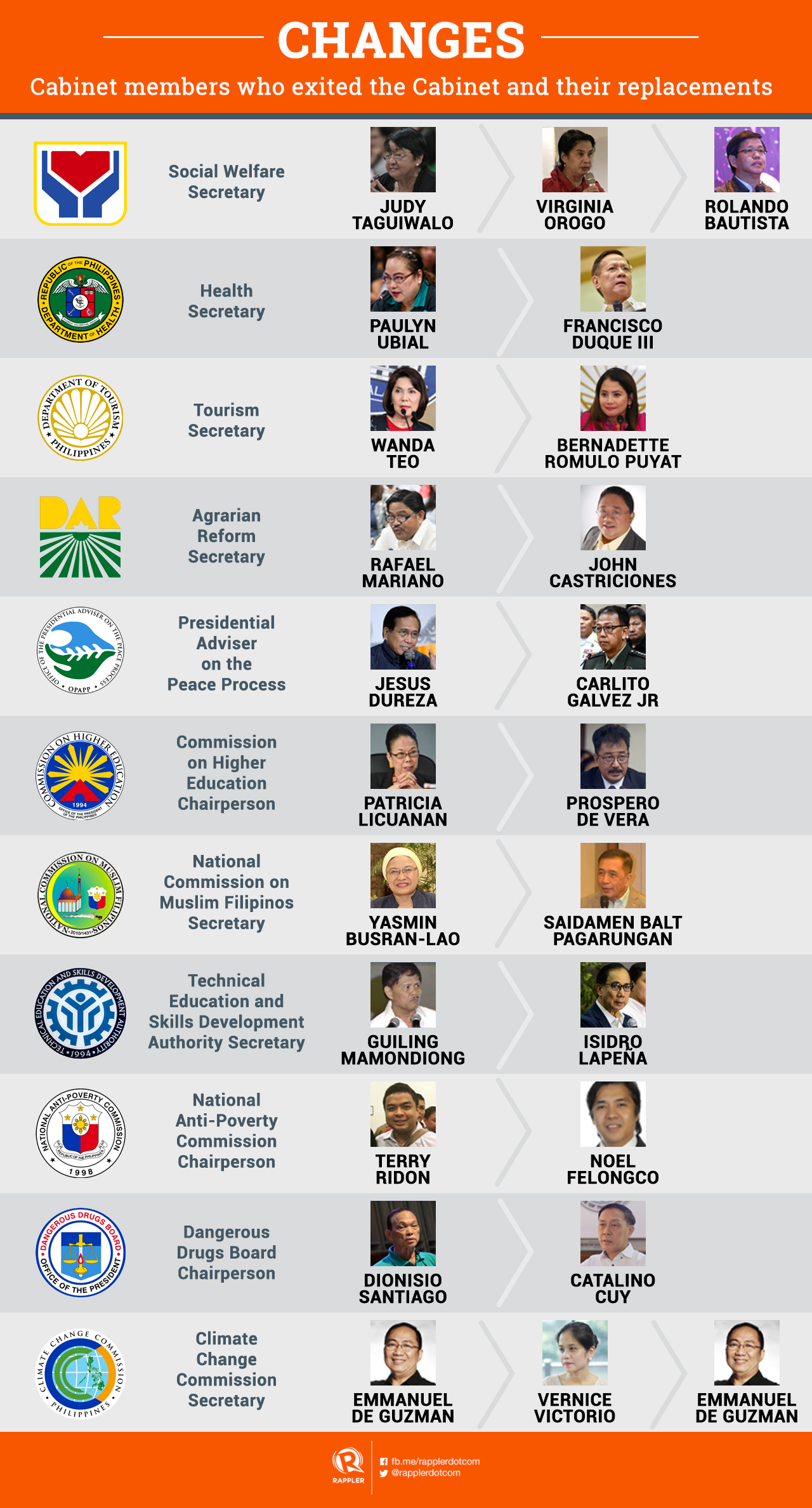
Duterte has made changes to 22 Cabinet posts so far. That’s a little less than half of the entire Cabinet (46 officials).
The most spectacular Cabinet changes were the replacements of former interior secretary Ismael “Mike” Sueno and Vice President Leni Robredo.
Not only did these take place in Duterte’s first year as president, they were drawn out in public. Sueno was fired during a Cabinet meeting and accused of corruption by Duterte in several public speeches. To this day, Duterte still sometimes refers to this episode to prove even his friends are not spared from his supposed intolerance for abuse of power.
Robredo was eased out of Cabinet meetings because of her opposition to the Marcos burial and other Duterte policies. She was not technically fired. The Vice President decided to resign from her Cabinet post – the first clear political separation between the two highest elected officials of the land.
Cabinet members fired due to alleged corruption or misuse of funds (all have denied the accusations):
- Mike Sueno
- Terry Ridon
- Dionisio Santiago
- Patricia Licuanan
Cabinet members who resigned after facing a string of controversies:
- Leni Robredo
- Vitaliano Aguirre II
- Wanda Teo
- Rodolfo Salalima
- Jesus Dureza
Cabinet members not confirmed by the Commission on Appointments:
- Perfecto Yasay Jr
- Gina Lopez
- Paulyn Jean Ubial
- Rafael Mariano
- Judy Taguiwalo
Cabinet members who resigned to run for an elective post:
- Bong Go
- Leoncio Evasco Jr
- Alan Peter Cayetano
- Guiling Mamondiong
- Harry Roque
Cabinet members transferred due to performance:
- Ernesto Abella
- Manny Piñol
Pool of replacements
Duterte showed interesting patterns when choosing replacements for his department Cabinet members. There were times when he picked lower-ranking officials who made an impression on him – such as Menardo Guevarra (previously Medialdea’s righthand man in Malacañang before becoming Justice Secretary) and Bernadette Romulo-Puyat (previously agriculture undersecretary before becoming Tourism Secretary).
He’s chosen from outside his circle: then-congressman Harry Roque as presidential spokesman and journalist Teodoro Locsin Jr as Foreign Secretary (though Duterte had previously appointed him United Nations envoy).
The military and police establishment is another constant source of new Cabinet members for Duterte. Military generals are plucked upon retirement to head agencies like the interior department (Eduardo Año), Office of the Presidential Adviser on the Peace Process (Carlito Galvez Jr), and social welfare department (Rolando Bautista).
The pattern extends to non-Cabinet members like Bureau of Customs chief Rey Leonardo Guerrero, Metropolitan Waterworks and Sewerage System board member Emmanuel Salamat, and National Irrigation Administration chief Ricardo Visaya. (READ: LIST: Duterte's top military, police appointees)
CONSTANTS
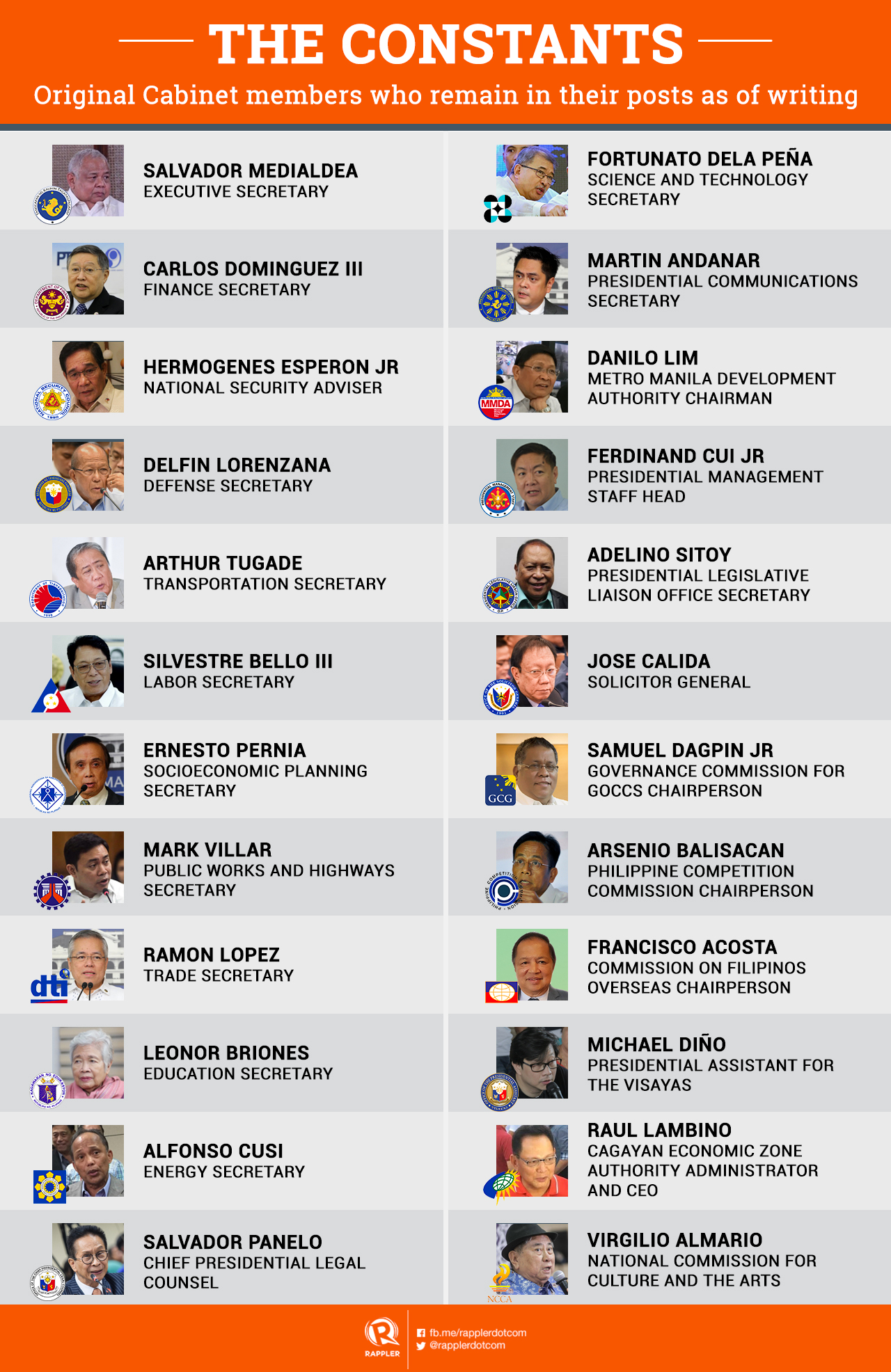
Twenty-four original Cabinet members have managed to keep their posts. A handful of them have proven to be key advisers – officials who have Duterte’s ear, can change his mind, and even take positions contrary to Duterte’s without drawing presidential ire. (READ: The many times Duterte and his Cabinet members contradicted each other)
Executive Secretary Salvador Medialdea
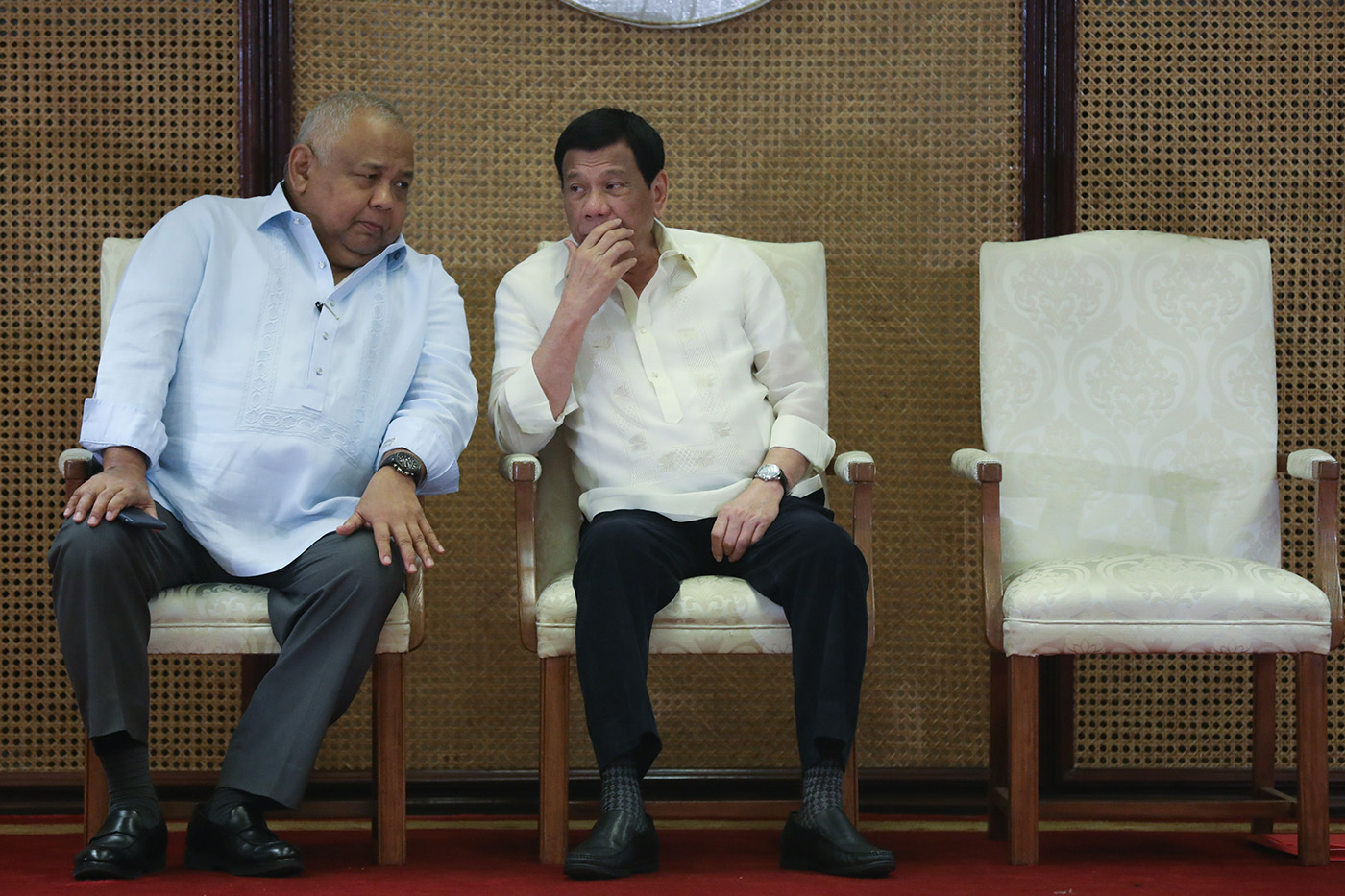
Fondly referred to as the “Little Big President” by Bong Go, Medialdea is one of the few who can convince Duterte to ease up on certain policy decisions. It was Medialdea who got the President to allow the resumption of lotto operations after his blanket ban on PCSO-regulated gambling operations. It was Medialdea, too, who told Duterte he could not unilaterally abolish the National Food Authority Council, prompting him to move it under the Office of the President instead.
Aside from Go, it’s Medialdea he tasks with informing Cabinet members of their impending exit. Remember the House coup that delayed Duterte’s 2018 State of the Nation Address by an hour? It was Medialdea going from one room to another for a compromise between then-House speaker Pantaleon Alvarez and Pampanga representative Gloria Macapagal Arroyo.
Finance Secretary Carlos Dominguez III
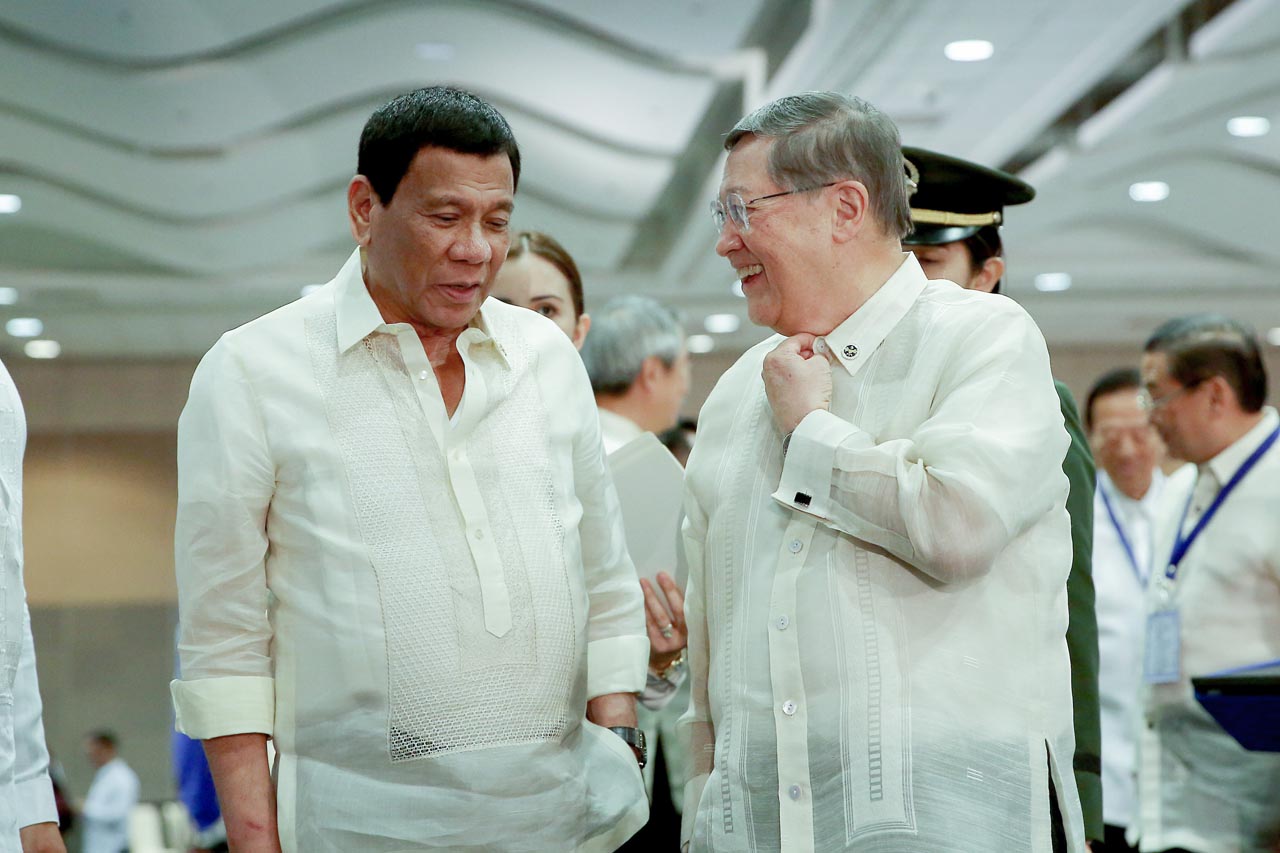
Dominguez and Duterte have known each other since they were kids. But while Duterte was the resident “bugoy,” often getting into scrapes in school, Sonny was the achiever, getting top marks and winning declamation contests. To this day, Duterte sees Sonny as his better in subjects he cannot grasp – economics and finance.
Duterte rarely interferes in matters of economic policy and often goes with Dominguez’ recommendations on appointments to posts with big economic impact – such as Nestor Espenilla as his first Bangko Sentral governor and William Dar as new agriculture chief.
He’s largely backed Dominguez’ tax reform advocacy. When Dominguez tutted at Duterte’s plan to lease military lands to commercial establishments, the President went with the finance chief’s suggestion of a new government insurance program for soldiers.
Dominguez, in turn, is constantly under pressure to fund populist policies Duterte has been bull-headed on, like free tertiary education and the senior pension hike. The President sometimes calls Dominguez “Mr Tsk Tsk Tsk” because of his supposed penchant for finger-wagging at costly initiatives.
Based on Duterte’s accounts, Dominguez has also played a key role in his decisions to fire certain officials. It was the finance chief who whispered in his ear before he fired Sueno and Piñol.
National Security Adviser Hermogenes Esperon Jr and Defense Secretary Delfin Lorenzana
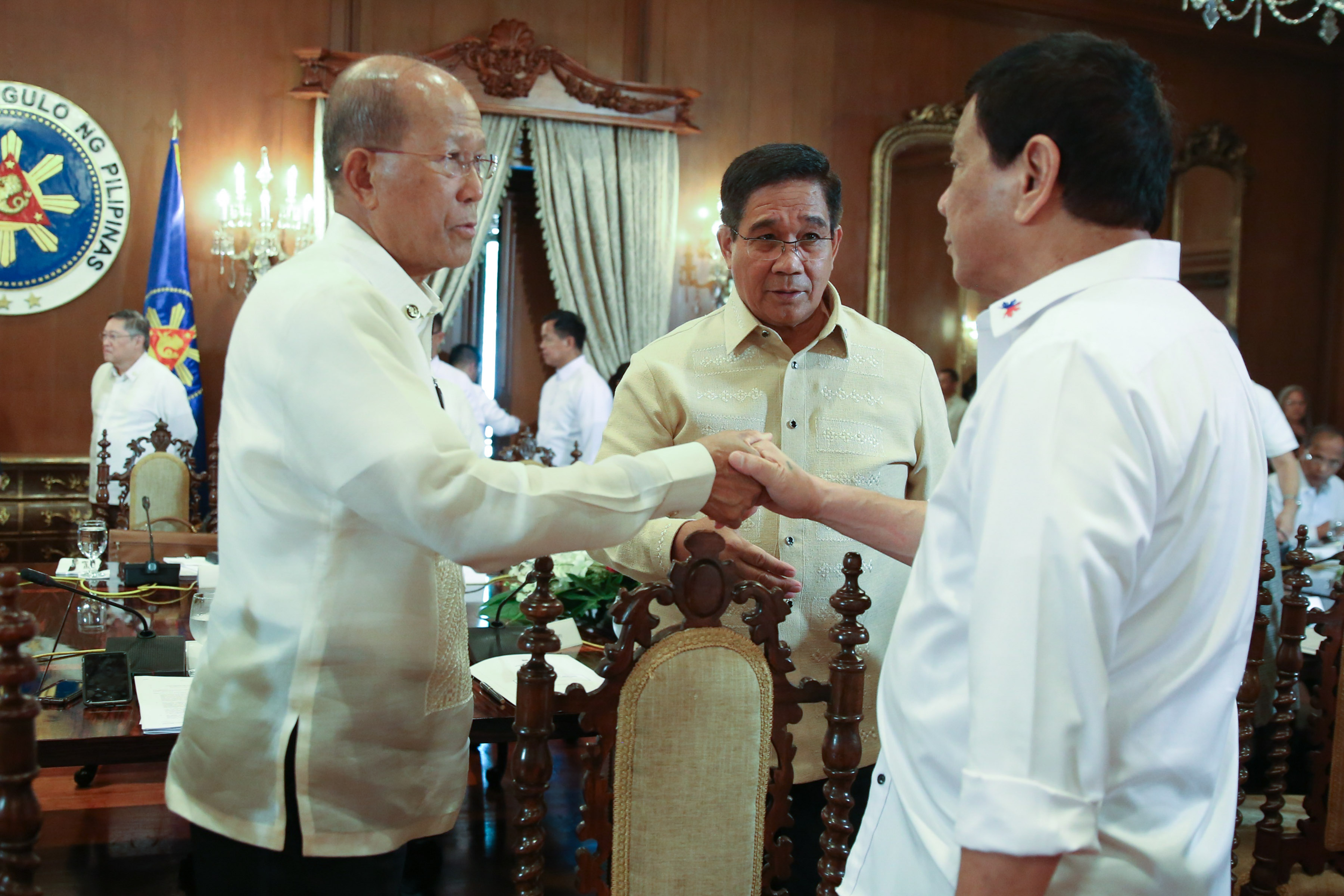
Largely because of the nature of their portfolios, Duterte always has an open ear for his security officials. He may not consult them on everything, but he listens to them and gives them free rein to interpret his policy pronouncements. And so even if he once declared a military separation from the US, the Philippine military continues its exercises and other engagements with the Superpower. Even if Duterte said he can’t keep Chinese fishermen away from Philippine waters, Esperon said the Coast Guard will continue catching Chinese trespassers.
Duterte has not been shy in making his opinion of his Cabinet members publicly known. He’s praised the performances of Mark Villar, Arthur Tugade, and Ramon Lopez – all members of his economic team.
To lighten the mood in his public events, he speaks in awe of the unsmiling demeanor of Eduardo Año or pokes fun at Salvador Panelo’s fashion sense.
Save for Vice President Robredo, no Duterte Cabinet member chose to leave the Cabinet due to a difference in policy positions. In the time of Gloria Macapagal Arroyo, 8 Cabinet members and two bureau heads, known collectively as the “Hyatt 10,” resigned in the wake of the Hello Garci scandal that implicated Arroyo in the alleged rigging of the 2004 elections.
Duterte’s predecessor, Benigno Aquino III, did not change Cabinet members as often as Duterte and was often criticized for keeping some accused of corruption or incompetence.
With 3 more years to go, the Duterte Cabinet continues to be under pressure to deliver the meaningful change the President promised Filipinos. – Rappler.com


